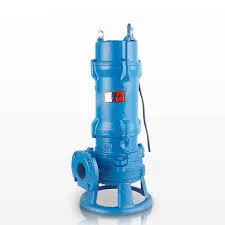English
- Afrikaans
- Albanian
- Amharic
- Arabic
- Armenian
- Azerbaijani
- Basque
- Belarusian
- Bengali
- Bosnian
- Bulgarian
- Catalan
- Cebuano
- Corsican
- Croatian
- Czech
- Danish
- Dutch
- English
- Esperanto
- Estonian
- Finnish
- French
- Frisian
- Galician
- Georgian
- German
- Greek
- Gujarati
- Haitian Creole
- hausa
- hawaiian
- Hebrew
- Hindi
- Miao
- Hungarian
- Icelandic
- igbo
- Indonesian
- irish
- Italian
- Japanese
- Javanese
- Kannada
- kazakh
- Khmer
- Rwandese
- Korean
- Kurdish
- Kyrgyz
- Lao
- Latin
- Latvian
- Lithuanian
- Luxembourgish
- Macedonian
- Malgashi
- Malay
- Malayalam
- Maltese
- Maori
- Marathi
- Mongolian
- Myanmar
- Nepali
- Norwegian
- Norwegian
- Occitan
- Pashto
- Persian
- Polish
- Portuguese
- Punjabi
- Romanian
- Russian
- Samoan
- Scottish Gaelic
- Serbian
- Sesotho
- Shona
- Sindhi
- Sinhala
- Slovak
- Slovenian
- Somali
- Spanish
- Sundanese
- Swahili
- Swedish
- Tagalog
- Tajik
- Tamil
- Tatar
- Telugu
- Thai
- Turkish
- Turkmen
- Ukrainian
- Urdu
- Uighur
- Uzbek
- Vietnamese
- Welsh
- Bantu
- Yiddish
- Yoruba
- Zulu
Telephone: +86 13120555503
Email: frank@cypump.com
Nov . 25, 2024 17:49 Back to list
double suction centrifugal pump diagram
Understanding the Double Suction Centrifugal Pump A Comprehensive Overview
In the world of fluid mechanics and engineering, centrifugal pumps play a vital role in various industrial applications. Among these, the double suction centrifugal pump is particularly noteworthy due to its unique design and advantages. This article aims to provide a detailed understanding of the double suction centrifugal pump, including its construction, working principle, and applications.
What is a Double Suction Centrifugal Pump?
A double suction centrifugal pump is a type of pump that features two inlets which allow water, or other liquids, to enter the pump chamber from opposite sides of the impeller. This design enables the pump to handle larger volumes of liquid while maintaining operational efficiency and minimizing hydraulic imbalances.
Construction
The construction of a double suction centrifugal pump involves several key components
1. Impeller The impeller is the rotating component of the pump that adds energy to the fluid. In a double suction pump, the impeller is typically designed with two suction channels.
2. Volute casing This is the outer casing of the pump that directs the flow of fluid into and out of the impeller. The volute collects the liquid discharge from the impeller and converts the kinetic energy into pressure energy.
3. Suction and discharge nozzles These nozzles facilitate the entry and exit of fluid from the pump. The dual suction nozzles help in balanced loading and reduces vibration.
4. Shaft and bearings The shaft connects the impeller to the motor. Bearings support the shaft and help in smooth rotation while minimizing wear and tear.
Working Principle
The working principle of a double suction centrifugal pump is based on centrifugal force. When the impeller spins, it creates a low-pressure area at the center, allowing fluid to enter through the two suction inlets. As the impeller accelerates the fluid outward, the centrifugal force pushes it towards the edges of the impeller, where it exits into the volute casing.
As a result of this design
double suction centrifugal pump diagram

- The balanced suction results in reduced axial loads, which can prolong the lifespan of the bearings and other pump components.
- Increased capacity and efficiency as the double suction design allows for higher flow rates without requiring increased energy input.
- Enhanced stability during operation due to even distribution of pressure at both sides of the impeller.
Applications
Double suction centrifugal pumps are widely used in various industrial sectors due to their robust design and efficiency. Some common applications include
- Water supply and irrigation In municipal water systems and agricultural irrigation, double suction pumps effectively manage large volumes of water.
- HVAC systems These pumps are utilized in heating, ventilation, and air conditioning systems for efficient circulation of water or other fluids.
- Power generation plants They play a crucial role in cooling systems, moving large amounts of water to ensure optimal performance of machinery.
- Oil and gas industry Double suction centrifugal pumps are employed to transport crude oil and other liquids, thanks to their ability to handle high flow rates.
- Chemical processing These pumps are ideal for transferring corrosive or viscous fluids in chemical plants due to their durable construction.
Conclusion
In conclusion, double suction centrifugal pumps are an essential component in various industries, known for their ability to handle larger flows with efficiency and stability. Their unique design minimizes potential issues related to uneven hydraulic forces while optimizing performance. As industries continue to evolve and demand more efficient solutions, the double suction centrifugal pump will undoubtedly remain a critical technology in the realm of fluid transport. Understanding the underlying principles, construction, and applications of this pump is crucial for engineers and operators working in fields that rely on fluid mechanics.
-
ISG Series Vertical Pipeline Pump - Chi Yuan Pumps Co., LTD.|Advanced Hydraulic Design&Energy-Efficient Solutions
NewsJul.30,2025
-
ISG Series Vertical Pipeline Pump - Chi Yuan Pumps Co., LTD.
NewsJul.30,2025
-
ISG Series Vertical Pipeline Pump - Chi Yuan Pumps Co., LTD.|energy-efficient fluid handling&industrial durability
NewsJul.30,2025
-
ISG Series Vertical Pipeline Pump - Chi Yuan Pumps | Advanced Engineering&Industrial Efficiency
NewsJul.30,2025
-
ISG Series Pipeline Pump - Chi Yuan Pumps | High Efficiency, Energy Saving
NewsJul.30,2025
-
ISG Series Vertical Pipeline Pump-Chi Yuan Pumps|High Efficiency&Reliable Performance
NewsJul.29,2025










